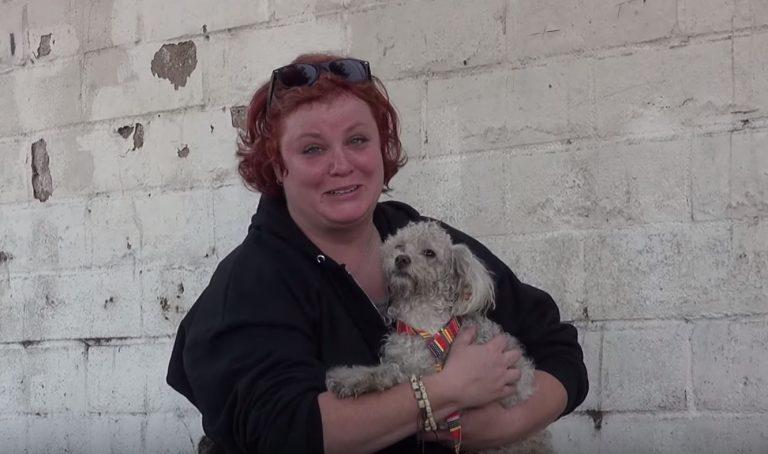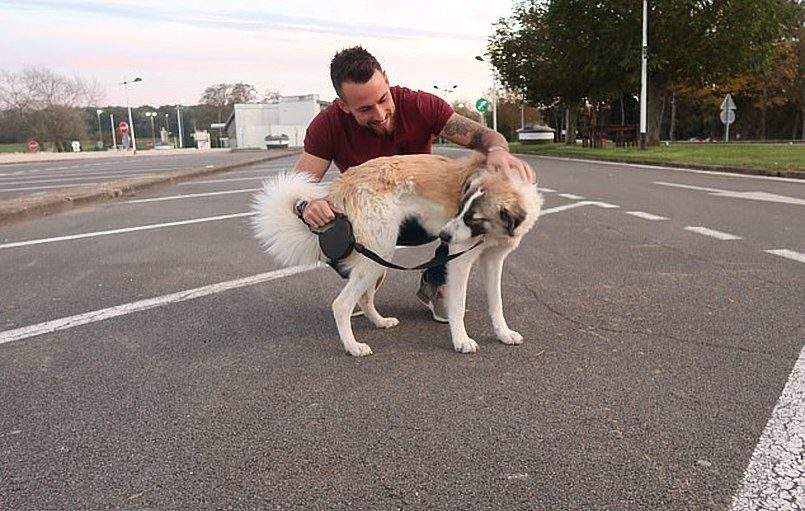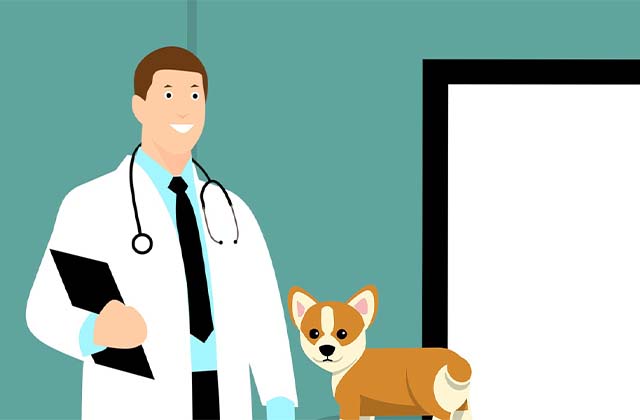
Why Does My Dog Cry In His Sleep? Common Reasons
Pet parents are frequently the first to acknowledge how much their canine family members behave like their human counterparts. One thing humans and dogs have in common is the ability to “talk” while they are asleep. Your dog may be dreaming about events from that day or about behaviors that dogs frequently engage in if you hear him weeping or making other noises as he sleeps. But, why does my dog cry in his sleep? Let’s see.
Table of Contents
Awake Paralysis
The body experiences sleep paralysis during dreaming, which prohibits people, dogs, and any other dreaming animals from, for example, physically performing actions they see themselves doing in their dreams. The body does not always entirely freeze during sleep paralysis, which is why dogs’ legs may occasionally quiver or they could moan and scream. Your dog’s tears are more akin to the mumbles of human sleep-talkers—half-formed vocalizations during sleep—than the cries of an animal in agony.
Sleep Cycles Of Dogs
Sleep is very important for dogs. It’s not unusual for a dog to spend half the day sleeping. Even more, sleep will be taken by puppies and senior dogs. The phases of dog sleep cycles are very similar to the sleep cycles humans experience, and that includes the rapid eye movement cycle, or REM sleep when dreaming occurs.
Slow-wave sleep and REM sleep are the two stages of sleep that dogs go through in a full cycle. Your dog will experience a slow-wave cycle that lasts 10 to 20 minutes once they are asleep. The REM cycle comes after this. If your dog cries or whimpers while sleeping, it is likely during the Dogs are most deeply asleep during the REM cycle.
Depending on the size and age of the dog, this full REM cycle can last anywhere between 30 and 45 minutes. Smaller dogs typically only dream for a minute or less every 10 minutes, while larger dogs typically dream for about five minutes every 45 minutes. Your dog may whimper, growl, or cry in his sleep at times of peak brain activity in the dream cycle.
Dogs Can Dream
Don’t worry too much that your dog is having a nightmare that you need to save it from if you notice that it is crying while it is sleeping. Although we can’t be certain, it’s likely that dogs dream about canine things rather than necessarily the spooky dreams that people have. Nevertheless, the AKC advises that in this situation it is best to “let sleeping dogs lie.”
All animals need uninterrupted sleep for healthy mental function, and if your dog is having a frightening dream, waking them up could lead to an unintended bite or, at the very least, stress that your dog doesn’t need. The AKC suggests gently calling your dog’s name until she wakes up on her own. Give her a few pets to calm her down if she wants to go back to sleep.
The Dreams Your Dog Is Having
The body heals itself and gets ready for the day ahead during the REM stage of sleep. The brain becomes more active during this stage in order to signal all bodily parts. As a result, dreaming takes place throughout this sleep stage as well. When your dog is dreaming, you’ll notice these symptoms because the brain transmits messages to various muscles in the body:
- Muscle twitching, especially in the limbs
- Eyes that move quickly
- Affecting faces
- Wailing, whimpering, growling, or woofing
Why Does My Dog Cry In His Sleep?
Dog Is Having A Bad Dream
Yes, just like people, dogs can have bad dreams, and certain stressful situations may cause them to act out by crying. Your dog may exhibit additional symptoms like trembling legs, twitching whiskers, and irregular breathing when they are dreaming.
Read about: Can Dogs Fall Asleep Standing Up: Why And How – Better Doggy
In this situation, there isn’t much to worry about as long as there’s nothing in the dog’s vicinity that could pose a safety hazard as your dog twitches around while he is sleeping. While it’s impossible to know exactly what your dog dreams about, many people claim that twitching and whining are signs that your dog is chasing something in his dreams.

Discomfort Or Medical Issues
Your dog may cry while he sleeps if he is in pain or uncomfortable. It can be extremely challenging for senior dogs to get a good night’s sleep due to arthritis. As a result of pressure from sleeping on the painful joints, some people may cry out in pain while they sleep.
Feeling Anxious
It may be difficult for dogs to sleep apart from their owners, which can result in crying and whining while they sleep. If you have a puppy, his crying in his sleep may be due to separation anxiety. Crate training your dog should start as soon as possible if you don’t want them to sleep next to you. Your dog will learn to whine and cry in order to get the attention it craves if you pick it up every time it cries or complains. Make your puppy’s crate a wonderful place to be, where good things happen, and your pup will soon be sleeping soundly there.
Feeling Boring
Dogs are typically energetic, active animals. For their general wellbeing, you must offer them opportunities for both mental and physical stimulation. Lack of exercise can cause your dog to become bored or exhibit other behavioral problems. It’s also critical that you occasionally come up with new things to do as a couple. If your dog always engages in the same activities or uses the same toys, he’ll probably grow bored. You can prevent your dog from whining by giving it opportunities to use both its mental and physical energy.
Dog Has A Health Issue
What if the crying is a regular occurrence? This might indicate more than just a scary dream. When a dog cries repeatedly while sleeping, we strongly advise that you consult a veterinarian to rule out any potential medical conditions.
Numerous sleep disorders, such as insomnia and REM behavior disorder, can have an impact on dogs. The latter disorder is linked to twitching and other physical tics. When awakened from sleep, dogs with REM behavior disorder might appear confused and disoriented.
For Traumatic Life Events
Ask about any traumatic life events when you adopt a puppy from a shelter. The puppy might have suffered an injury, lost his mother, or been split up from his litter.
Dogs can experience PTSD just like humans do. Well into adulthood, your puppy will be able to dream about these happenings. You should discuss the best course of action for this issue with your veterinarian. Medication and behavioral therapies are frequently used as PTSD treatments. The ideal course of action for your dog’s treatment can be suggested by your veterinarian.
Due To Seizures
Twitching and sobbing while sleeping may be symptoms of a seizure or other neurological conditions. Whimpering doesn’t help distinguish between seizures and dreams, but the strength of the twitching does. While having a seizure, your pet twitches as well, but it seems more out of control. There may be thrashing or trembling in one area of your dog’s body or throughout the entire body.
The majority of dogs’ seizure episodes happen while they are awake or shortly after waking up, though they can also happen while they are sleeping. Your dog might move its legs for no more than 30 seconds while dreaming. Consult your veterinarian as soon as possible if these movements seem violent, persist for a long time, or your dog appears confused when waking up.
REM Behavior Disorder
REM Behavior Disorder, a rare condition that affects some dogs, is present. Your dog will move while it sleeps, which is similar to sleepwalking. Your pet may run into walls, attack inanimate objects, and cry or growl while they are asleep due to this disorder, which makes them believe their dreams are real. When dogs with REM Behavior Disorder awaken, they don’t appear to be confused or disoriented. If you see any of these symptoms in your pet, consult your veterinarian right away. During these times, it’s possible for your dog to inadvertently hurt himself or you.
Conclusion
Like people, dogs go through cycles of light and deep sleep. Dogs have much shorter sleep cycles than humans, whose cycles typically last 90 minutes or so. They can complete two sleep cycles, each with a 1–5 minute period of REM sleep, in a 45-minute nap.
Dreaming happens during rapid eye movement (REM) sleep. In this stage of sleep, your dog might “act out” his or her dreams by moving its limbs or paws, making faces, growling, whimpering, or crying. The rapid eye movement that gives this stage of sleep its name is also visible in the way that their eyes flutter and move.
All of this is perfectly normal and shows that the dog is having sound sleep patterns. As a result, if your dog cries while they are sleeping, it is most likely just a sign of deep sleep rather than distress.




